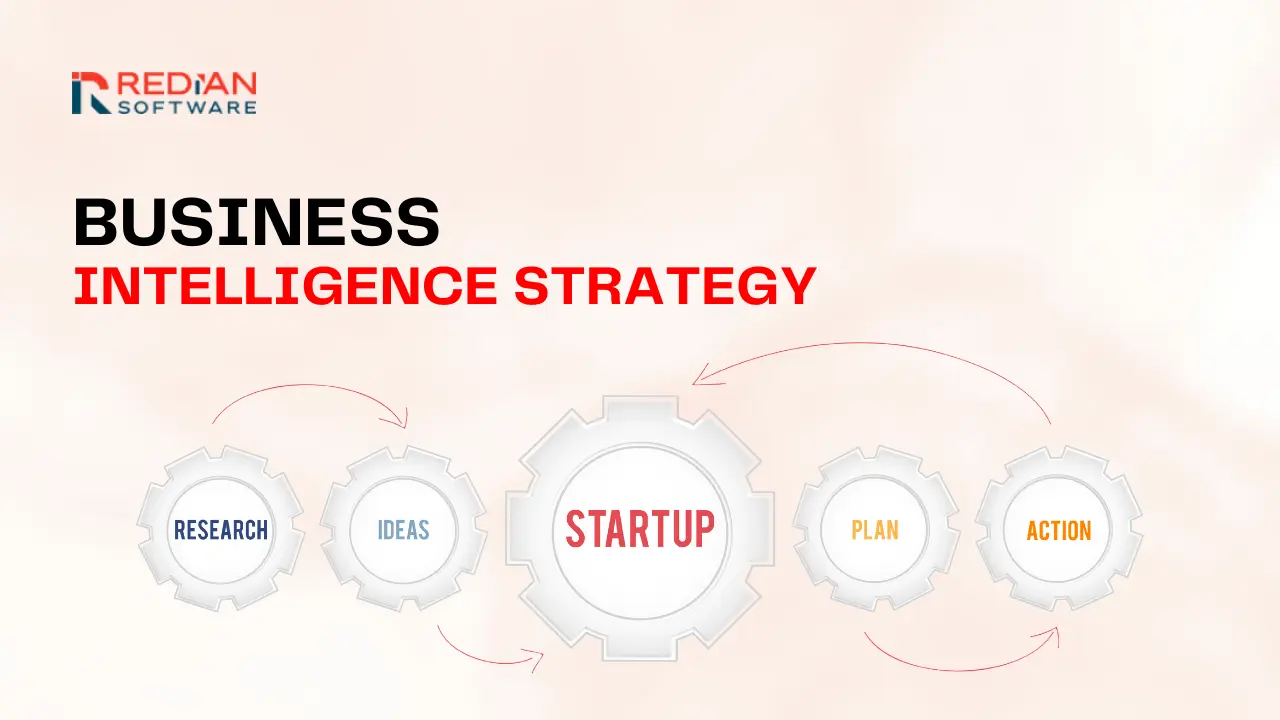Business analytics is the method of translating raw data into actionable observations .It enables you to gather data from various sources, organize it, and then enjoy the analytics. Perhaps, because it provides the most balanced view of the market. But, as you would expect, beginning such a complicated undertaking necessitates some planning, which we intend to assist you with.
| With BI | Without BI |
| A consistent representation of the reality that drives good business decisions. | People use different details when making decisions, so there are many versions of the facts. |
| Consistent definition | Unclear names and definition by guessing |
| Emphasis is given to data accuracy. | Data accuracy is a minor priority. |
Why you need a BI strategy
Your BI strategy has three main elements:
1 – Creativity:
Why are you establishing a BI practice in your organization, and what do you want to attain?
2 – Methods and process
Who will develop and implement the BI strategy? And how so?
3 – Tools and architecture
What kinds of dashboards and strategies do we want to create? For which areas? And how will they impact those areas?
Steps to Create a BI Strategy
Your BI plan must first be in line with your company’s priorities and vision.
Data, in the context of business intelligence, will accelerate change in your company.
This project would put trusted, relevant data in the hands of staff, allowing them to make better decisions on a daily basis.
By following our Guide, you can begin this transition right away.
Choose a sponsor
Ideally, you can pick an executive-level representative to sponsor the initiative and receive buy-in from other high-level staff. Organizations who put a high priority on data in all organizations name a Chief Data Officer to spearhead the BI initiative. When your BI portal has been deployed and is performing as intended, produce some useful, visible reports to share with your supporter. Demonstrate to your supporter, and thus the business, that your plan is efficient.
Pick your BI network
A BI platform bring innovation can achieve a great deal, but it is not the whole BI plan.
You will now compare BI channels to determine a suitable match for your strategy now that you’ve selected a sponsor for this initiative.
Many platforms share similar functionalities, and you can prioritize the following characteristics on a scale of importance:
1.Access to data and viewing related material.
2.Data interactivity within a visual interface.
3.Ability to delve further into data on your own and find new ideas.
4.Bottom-up promotion of new insight findings in a governed climate.
5.Work collaboratively with others on data processing and visualization.
Classify and involve the main stakeholders.
While this may include software, business intelligence is not strictly an IT initiative. Financial documents are needed for BI, although this is not entirely the responsibility of the finance department. Bring in one representative from each team that will be affected by the BI system. Involve them early on and do interviews with them. Inquire on how they use data in their careers, what happens and what doesn’t.
Organize a business intelligence unit.
Your BI team will be in responsible for putting your plan into action.
When the company is tiny, you can recruit new employees or make people do different tasks.
Non-analysts can view and interact with reports and dashboards thanks to BI channels (known as self-service business intelligence).
Define the scope of BI
Before you implement business intelligence tools, you must first determine what BI means to your enterprise. The use of data to make strategic decisions is referred to as business intelligence. However, you must first decide how this will operate with the company\’s day-to-day activities and which teams will use BI. Coca-Cola, for example, developed personalized dashboards for customer service representatives.
Prepare data technology
To do a reliable analysis, market intelligence must provide valid data sources.
BI platforms have commonly imported data from a data warehouse. You can interpret data from different sources using modern BI.
We distinguish between two types of data: trusted and untrusted.
Develop a business intelligence roadmap
Data that can be trusted is stored in databases or readily downloaded into databases, such as spreadsheets, customer relationship management (CRM) data, financial data, and so on.
This is the data that you have most often seen in past market analytics.
The BI team should have a blueprint for putting your strategy into action.
Keep the following points in mind when creating a BI roadmap:
Keep track of deadlines and dependencies, such as the completion date of the data warehouse.
Keep an eye on the future and change your strategy as needed.
